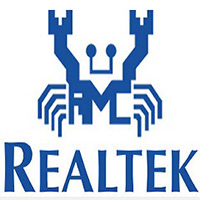By the way, what is the difference between this method and independent SRS Premium Sound, SRS Audio Sandbox, and SRS HD Audio Lab? SRS Audio Sandbox and SRS HD Audio Lab all come with a driver, virtualize a sound card, bridge it to the original sound card, and then set the virtual sound card as a playback device to achieve changes in sound effects. The same goes for standalone SRS Premium Sound. The advantage of the built-in driver is that it supports any brand of sound card, but some games do not support SRS, a virtual sound card, and there is no sound when running. This driver is a modified Realtek driver, which forcibly opens the built-in SRS Premium Sound, so that it can be installed on non-customized models without compatibility issues.
1. Uninstall the current sound card driver and all sound effect drivers, and restart
2. Unzip the compressed package and run setup.exe to install. There will be a warning during installation, choose to install always. Restart after installation
3. Find SRS Premium Sound in the start menu, run it, and you can adjust it.
But this is just the basic application of SRS Premium Sound. Let’s take a look at some of the troubles.
1. The solution of using brand machine on white card
Generally speaking, if a brand phone manufacturer plans to pre-install a certain sound effect on a certain model, the corresponding parameters must be adjusted according to the speaker design of the machine.
For example, SRS will package solutions for various customized models into SRS console installation packages and send them to brand machine manufacturers.
When the installation package is executed, the machine model will be detected and the corresponding solution will be automatically loaded.
But now it is installed on the white card, so it can only load the most mediocre plan. So how to use those customized model solutions?
I have put nearly 200 brand machine solutions in the #presets directory of this driver package. They are a bunch of xml files extracted from the SRS console installation package (duplicate and invalid ones have been deleted). The file names are the machine models.
If you are using a laptop, you can observe the position and size of the speakers of your machine, and search online to see if there are any brand machines of the same size with similar designs. See if this brand machine has a corresponding solution. If so, you can apply it directly.
If you have the patience, you can try a few more and find the solution that suits your speakers best or sounds good to you.
For example, if you want to apply the ASUS ET20xx all-in-one solution (actually my Sonic Focus is this model), find presets_asus_et2001.xml in the driver package, rename it presets_SRS_default.xml, and copy it to Program FilesSRS LabsSRS Control Panel to overwrite the original file. Right-click the SRS icon in the tray, exit, and reopen. The default parameters will be updated. If music is playing, you can immediately hear the effect change.
Change skin
I guess you are already used to the famous default skin of SRS Premium Sound. Let’s change it to something fresh.
There are two customized skins in the #skins directory of the driver package, which are two zip files. The effect is as follows
Do not unzip, just select one and copy it to Program FilesSRS LabsSRS Control Panel
Then open the registry and find
HKEY_LOCAL_MACHINESOFTWARESRS LabsAPOSRS Premium Sound
HKEY_LOCAL_MACHINESOFTWARESRS LabsAPOSRS Premium Voice
HKEY_LOCAL_MACHINESOFTWARESRS LabsAPO InstSRS Premium Sound
There is a ControlPanelArg value below these three places. Double-click it and change the file name behind it to the file name of the new skin. Right-click the SRS icon in the tray, exit and reopen, and the skin will change.
In fact, there are more than these two preset skins in the SRS console installation package. There are also several logo versions, but they are either similar to these two or have incomplete functions, so they will not be extracted.

Hot search terms: 360 Security Guard Office365 360 browser WPS Office iQiyi Huawei Cloud Market Tencent Cloud Store











































Useful
Useful
Useful